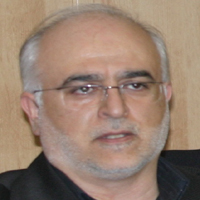Islamic Religiousness and Individual Time Preferences, An Experimental Study
The purpose of this research is to investigate the effect of Islamic religiousness on individual time preferences. For this purpose, the experimental method, which allows controlling the confounding variables, and, of course, is the most important and valid method for estimating individual time preferences, is used. The method used to derive individual preferences was multiple price list, in which individuals are subject to multiple monetary choices. The discount function for estimation of discount rate, which was used in this study, was hyperbolic function, in this type of function, the discount does not take place at a constant rate, but the discount is reduced by extending the time interval. The fitting of the data using the hyperbolic function showed that this type of discounting has a good fit and is consistent with previous research. In order to assess religiosity, a valid intrinsic-extrinsic questionnaire was used. valid Hexaco questionnaire was used to control the personality variable. The subjects were 120 students from Allameh Tabataba'i and Payam noor University. The least squares regression method was used to measure the effect of religiosity on time preferences. The results of the study showed that intrinsic religiosity had a negative and significant effect on the discount rate, while extrinsic religiosity had a positive, but meaningless, effect on the discount rate. Among all kinds of personality dimensions, only conscientiousness has a significant effect on the discount rate. It seems that the higher level of intrinsic religiosity, through self-control, increases the patience of the religious individual and, consequently, reduces the discount rate. The increase in conscientiousness dimension of the personality, which reflects the tendency to organize time, work regularly, and accuracy in decision making, also reduces the discount rate.
-
Estimation of the optimal unemployment rate in accordance with the full employment of the labor force in Iran's economy for the years 69 to 1400
Seyed Mohamadreza Seyyed Nourani, Hamid Esmaili Ezat *, Teymour Mohamadi
Stable Economy Journal, -
Comparative-Critic al Analysis of the Distribution Theory of Shahid Sadr and classical and neoclassical economic Thinkers; A Mathematical Approach in the Framework of the Model of Interference Generations; (Strategic Implications for Iran's Economy)
Mojtaba Hasani Gharetappeh *, Mohamadmehdi Mojahedi Moakhar, Mohammadjavad Nourahmadi, Seyed Mohammadreza Seyednourani, Morteza Khorsandi
Journal of Economic Literature,



